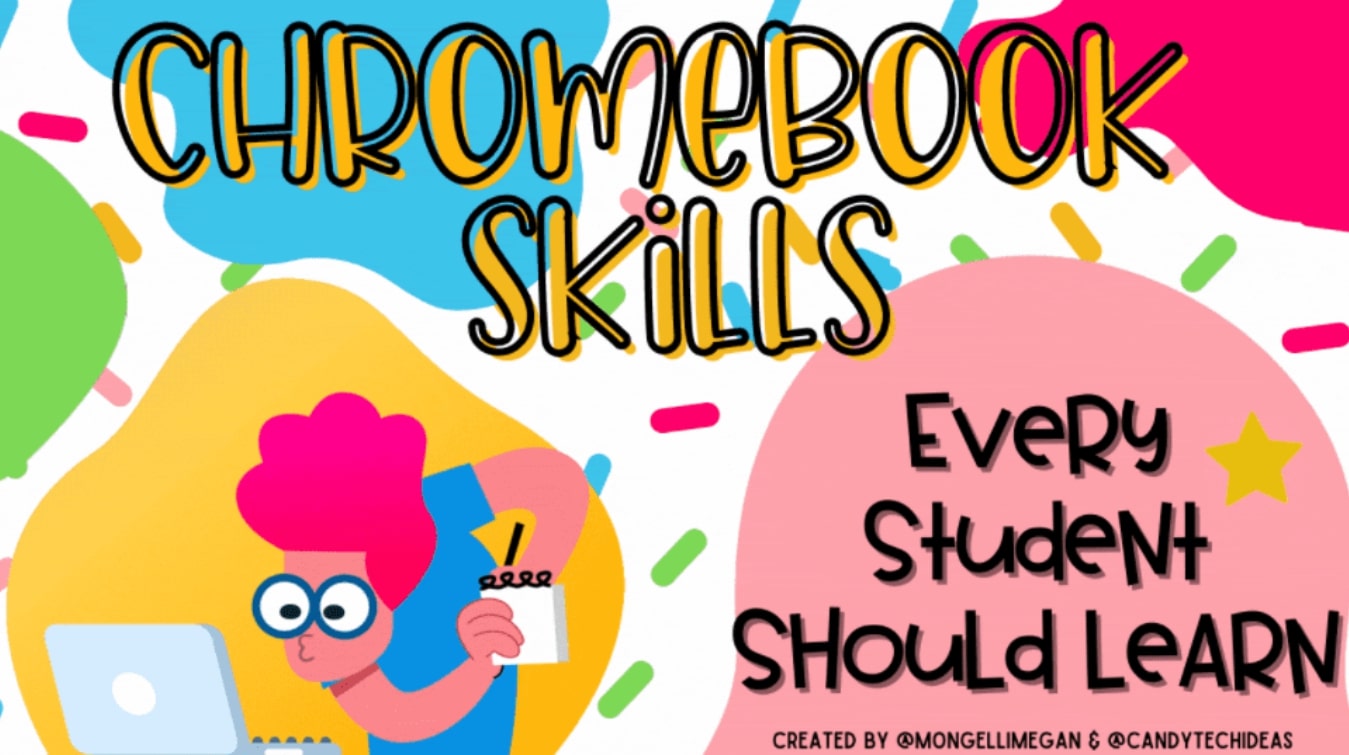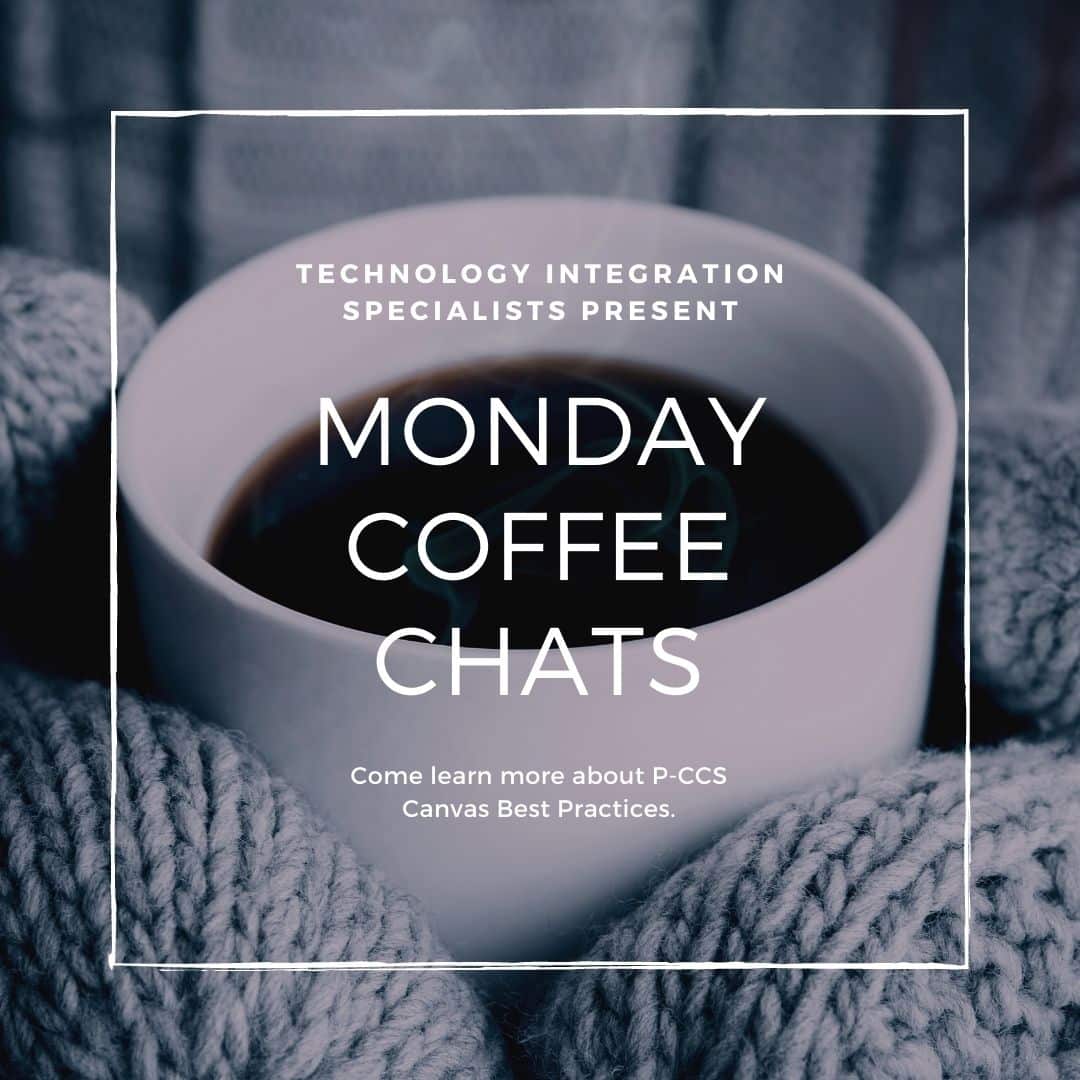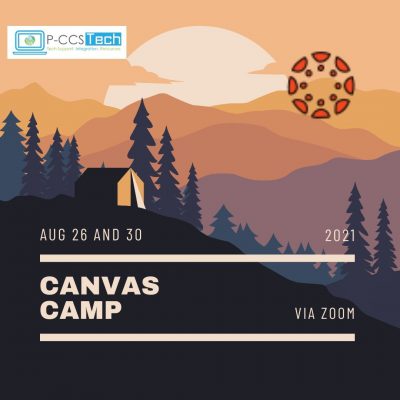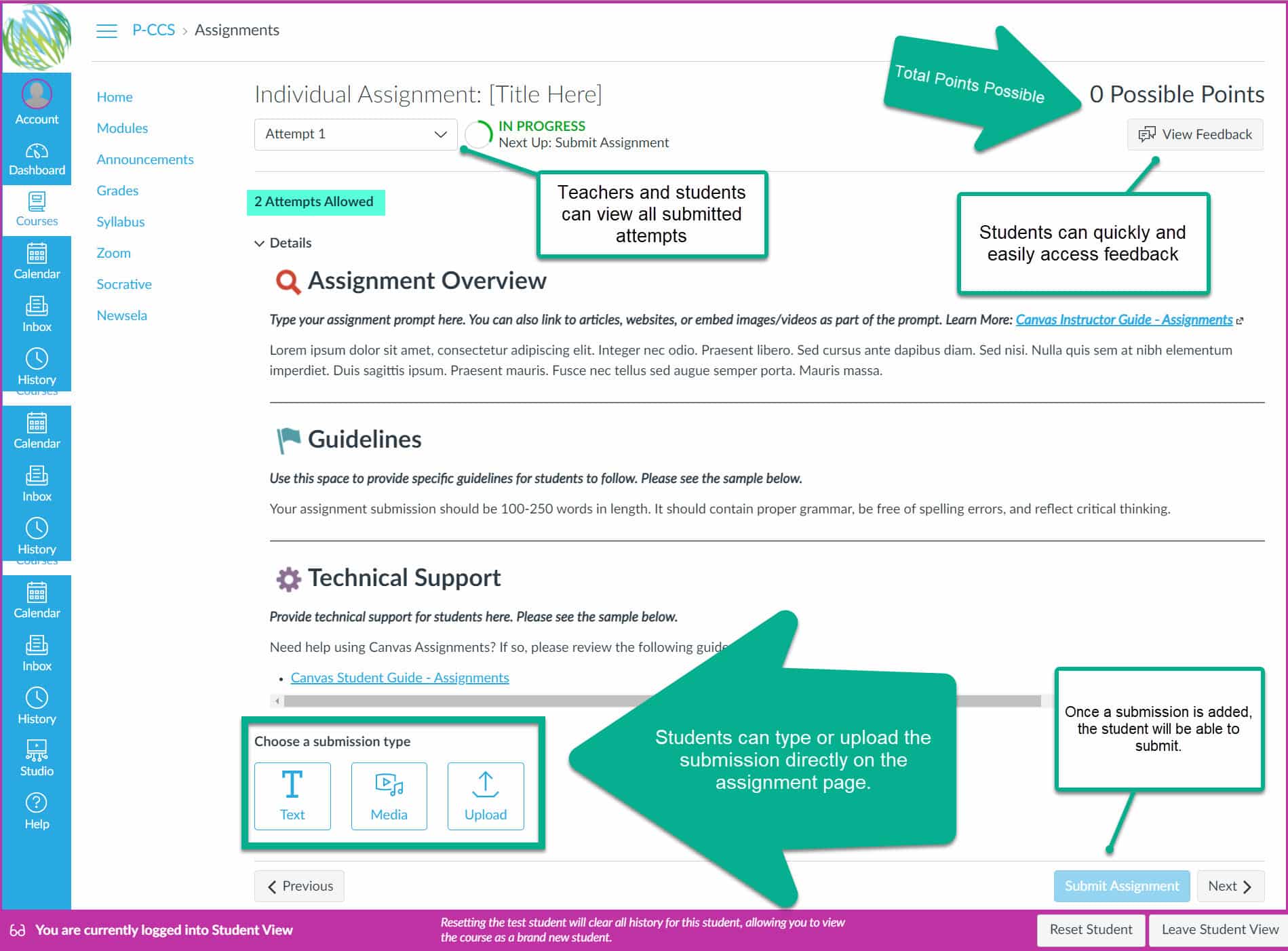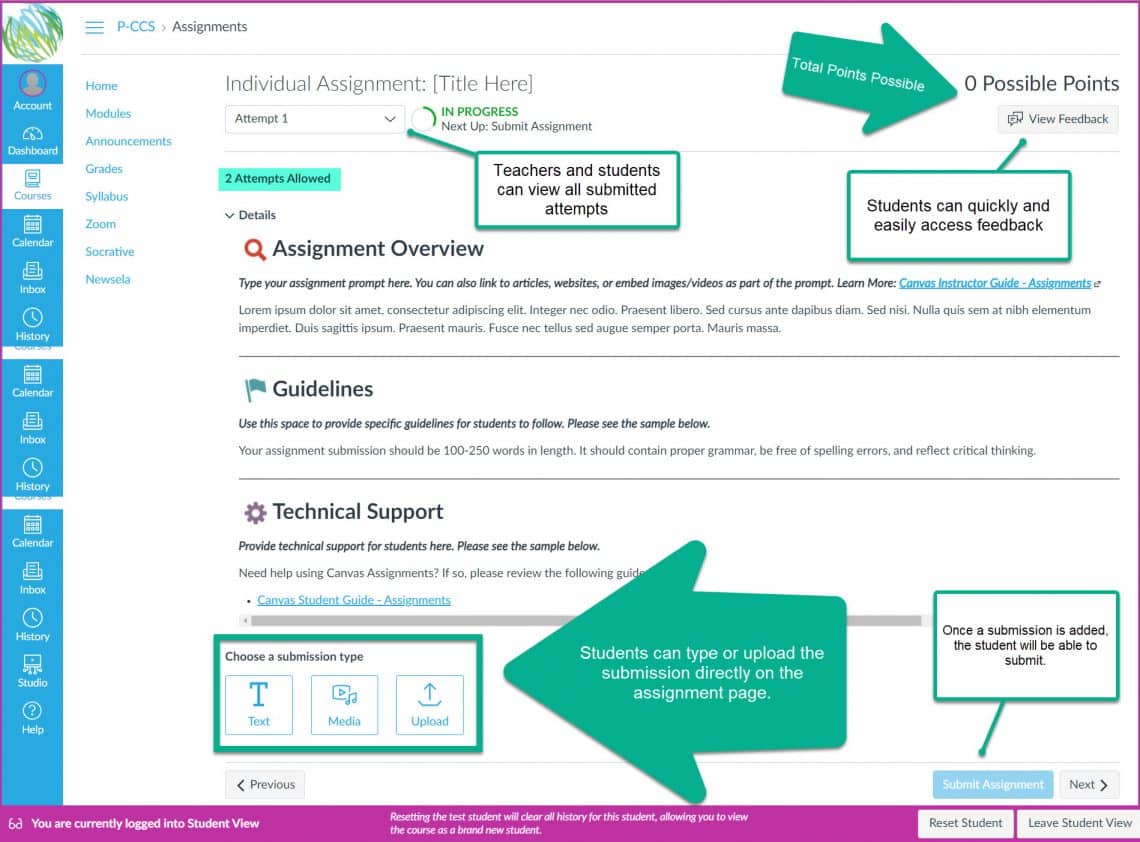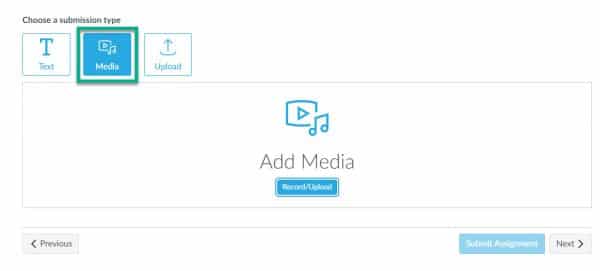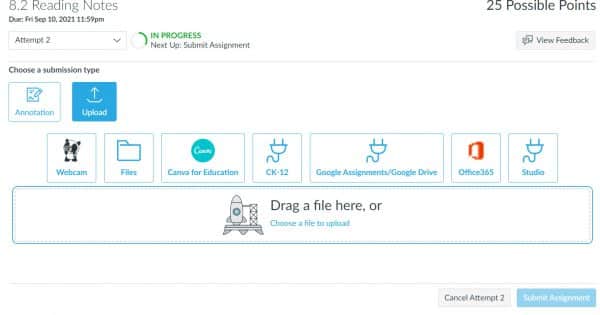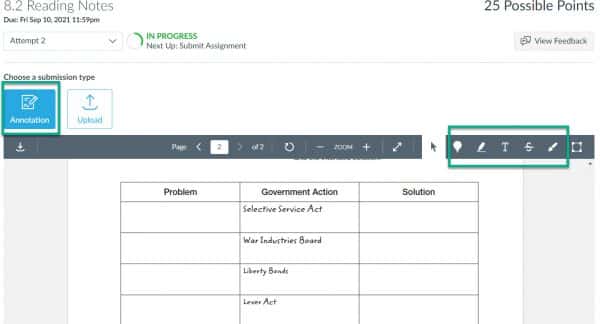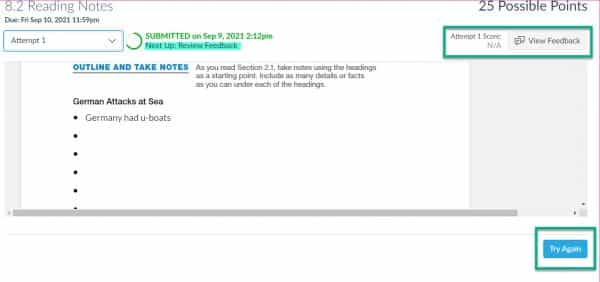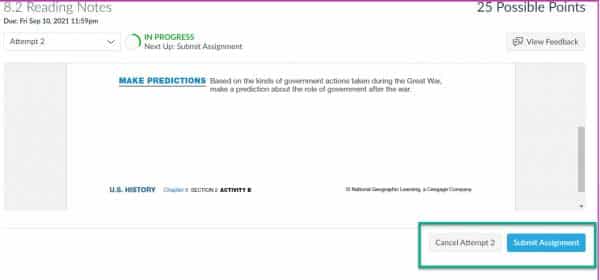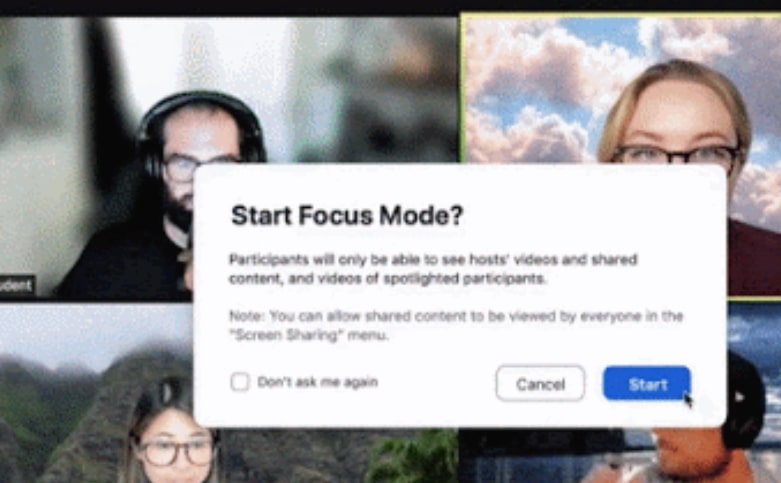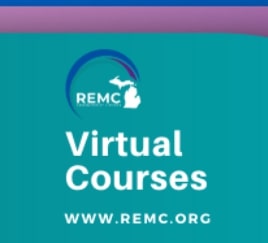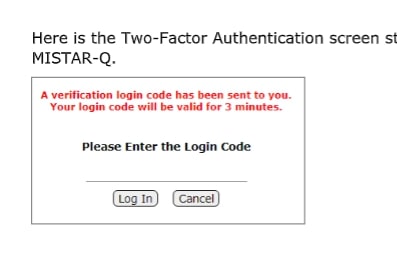The slideshows below offer some helpful tips and tricks for more effective Chromebook usage.
Monday Tech Coffee Chat: Supporting Absent Students
This Monday, September 27, we will be holding another TIS Coffee Chat on the topic of Supporting Absent Students. We will talk about how to add an Absent button and set up your information page for Absent students. Sessions are only about 20 minutes long and take place over Zoom.
Start Times (feel free to attend at a time that works best for you):
- High School: 7:00 am Add to Calendar
- Middle School: 7:45 am Add to Calendar
- Elementary: 8:15 am Add to Calendar
Feel free to browse the Session Resources which includes a helpful, technical document for broadcasting your class via Zoom: https://wke.lt/w/s/jd6oHX
Check out the recordings of previous sessions.
Canvas Camp 2021 and Tech Coffee Chat #1 Recordings
Thanks to all who were able to join us during Canvas Camp 2021! We are happy to continue to support you with our Monday Morning Coffee Chats. Below you will find links to recordings from our August sessions.
Studio Q & A-This session covered a lot of the basics of Studio and looked at some more advanced features. The trainer also provided great ideas for how to use Studio as the teacher and how students can use it.
Canvas Q & A– In this session we talked a lot about copying course content. Toward the end, Cory gave a really great introduction to Groups.
Canvas Course Design Considerations– Here’s the session agenda. This training is great for all grade levels and also had a few good nuggets for elementary teachers.
TIS Face Off: Canvas Tips- Matt and Kaelyn face off about their favorite Canvas tips. Recording coming soon.
Last week we had our first Tech Coffee Chat centered around the Canvas Best Practice, Simplifying the Course Navigation Menu. Check out the recording and join us Monday, September 20 for tips on creating an informative, welcoming home page.
New Assignment Enhancements in Canvas
Canvas has made several adjustments and improvements to the student assignment experience. Take a look below.
If you choose “Text Entry” for the student turn-in option, student work will auto-save and they can submit directly on the page.
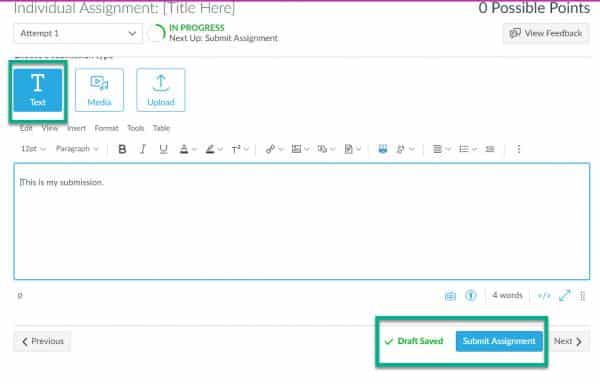
Scroll through the gallery below to see other assignment options.
If you feel these enhancements will not serve your students, you can toggle them off under Settings/Feature Previews.
2020-2021 Course Clean Up
Please make sure your 2020-2021 courses are closed. We have heard from a few students and parents that are still seeing their 2020-2021 courses. You’ll want to ensure your courses are closed or unpublished.
Navigate to https://pccsk12.instructure.com/courses or click on the “Courses” icon on the Course Navigation Menu and click “All Courses” You’ll see a list of your courses that are still published.
- If you notice any from the 2020-2021 school year in your current enrollments you will need to take action.
- If you see 20-21 published courses under Past Enrollments, that is as it should be and no action is required.
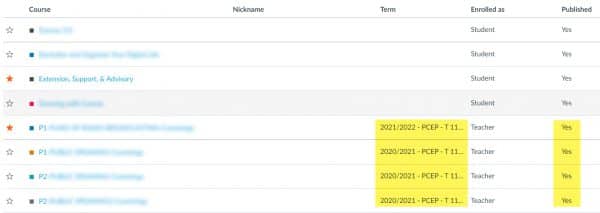 You may be able to open the course and click “Unpublish.” If you are unable to do that, please submit a tech ticket.
You may be able to open the course and click “Unpublish.” If you are unable to do that, please submit a tech ticket.
Also keep in mind that any manually-created courses like a counseling group, club, or media center course should be closed out if they are no longer needed. Or students that have moved up to a new building level should be removed from the course.
These closed courses will still be accessible in a view-only format to students in “Past Enrollments.”
Introducing: TIS Monday Coffee Chats
In late August, the P-CCS Canvas Best Practices were published. https://tech.pccsk12.com/canvas-best-practices/
To help you carry out these practices, the Technology Integration Specialists plan to offer brief (20-25 minutes) sessions before school on Monday mornings. We will provide a rationale for the practice, a quick tutorial, and examples when appropriate. Be sure to bring your favorite morning beverage!
Start Times (feel free to attend at a time that works best for you):
- High School: 7:00 am Add to Calendar
- Middle School: 7:45 am Add to Calendar
- Elementary: 8:15 am Add to Calendar
Topics:
- September 13: Simplify Course Navigation
- September 20: Create a Welcoming, Informative Home Page
- September 27: Provide Clear Guidance for Absent Students
- October 4: Post Assignments Online, via Canvas
- October 11: Use Announcement Weekly
- October 18: Use Modules to Organize and Distribute Content
Action Required: Publish Your Canvas Course(s)
Please note that each teacher must manually publish the course(s) they want to be visible to students.
Publishing your course only takes one click! From the Course Card on your Dashboard, click “Publish” (see screenshot below).
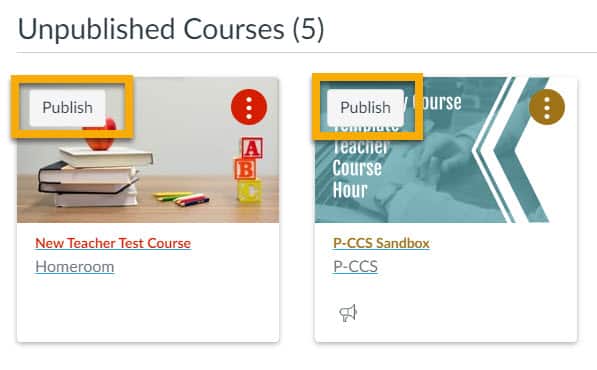
Alternatively, you can open the course home page and click the “Publish” button on the right side of the screen (see screenshot below).

As a reminder, your courses in MISTAR have been auto-populated in Canvas and auto-rostered with students. These are the course(s) you should publish and actively use with students. Any manually created courses should either be copied or cross-listed with your auto-populated courses. You can also cross-list multiple sections of the same course following the instructions provided in one of our previous posts.
Two Key Highlights from Zoom’s August Releases
New and Enhanced Features
- Focus Mode: In Focus Mode, only the host can see participants’ videos and profile pictures. You can start Focus Mode from the “More” menu on the toolbar of the desktop client. This setting is available at the account, group, or user level setting pages. To use Focus Mode, you must have desktop client version 5.7.3 or higher for Windows or macOS.
- Authentication exception for single instance of recurring meeting: If only authenticated users are allowed to join the meeting, account owners and admins can allow authentication exceptions for a single instance of a recurring meeting to allow guests to join the meeting. This feature can be enabled in the Meetings > Security Web Portal settings.
Focus Mode
Focus Mode does just that – it helps keep people focused in a Zoom meeting. Designed with educators in mind, Focus Mode places meeting participants in a view where they are only able to see themselves, the host/co-hosts, and the content they are sharing. In this view, hosts and co-hosts can also choose to view participants in gallery view, enabling them to see all participants simultaneously.
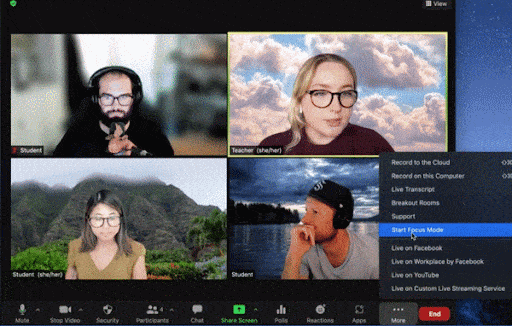
Don’t forget to download the latest version of Zoom to access these features and more.
REMC Back-to-School Learning 📅 Register for September Virtual Courses, earn 10 Free SCECHs
Passing along news from REMC: 2021 SEPTEMBER REMC Virtual Courses
Kick off the school year with new skills and tools to engage students.
Earn up to 10 Free SCECHs
Take advantage of September’s Virtual Courses for all your back-to-school needs. It’s a great time to learn a new skill in an instructor-led virtual course setting. Each course offers 10 free SCECHs, registration deadline is Friday, September 3rd.
The REMC Virtual Courses offer an easy, convenient way for teachers to connect and collaborate from the convenience of their home. The Virtual Courses are free, offer free 10 SCECHs when completed, and are open to all Michigan school personnel. There are no SCECH fees because REMC SAVE’s vendor partners provide support for all REMC professional learning opportunities.
- Formative Assessment Tools that Support Teaching and Learning
- Gamification for Student Engagement & Learning
- Learning to use Open Educational Resources on #GoOpen Michigan
- Practical Differentiated Instruction
- Storytelling to Enhance Teaching
Register by Friday September 3rd – Classes Begin September 6th.
If you have questions or need further assistance with your course registration, please contact Erin Rommeck, REMC Event Coordinator.
Two-factor authentication now required for MISTAR access
As shared in an earlier newsletter posting, due to enhanced cybersecurity insurance requirements in response to the dramatic rise in cyber-attacks, districts now have to ensure that staff pass two-factor authentication to gain access to personally identifiable data (PII), including student data, in two MISTAR applications (Q and Student Scan).
- Upon logging in, each staff user will be required to retrieve and enter a system generated six-digit number.
- The number will be emailed to their email address and will come from noreply@resa.net with subject MISTAR-Q Login Code.
- If logging into the mobile app and notifications for the app are activated on the device, the number may also be received via push notification.
- Staff will need to authenticate only once per day (as opposed to each login throughout the day) using the same browser and same device. Each browser or device will require authentication each day access is attempted.
- Each initial login attempt will generate an email of a different six (6) digit code and the most recently emailed code will be the only code that will work to successfully log in.
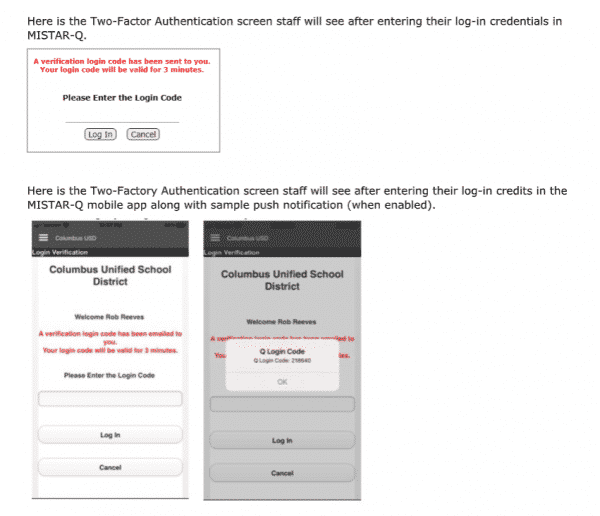
NOTE: since the Student Connection and Parent Connection applications accessed by our students and parents ARE NOT required to have two factor authentication at this time, our district has decided to NOT MAKE that a requirement for successful login for those account holders.

